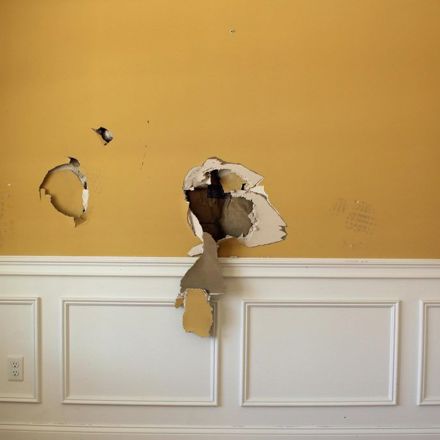What to do if a tenant damages the property?
The Residential Tenancies Act and Tenancy Services outline legislation that provides both property owners and tenants with rights when it comes to renting a property. As a property owner, understanding the extent of property repairs and damage you are responsible for during a tenancy is crucial. Property damage is not always straightforward; thus, tenants are expected to promptly report any repair or maintenance needs to their Property Manager.
This article aims to highlight key areas related to property damage and repairs. Let's delve into the distinctions between 'Fair Wear and Tear' and 'Tenant Damage'.
What is ‘Fair Wear and Tear’?
'Fair wear and tear' refers to the gradual deterioration of items due to regular usage. Examples include paint becoming marked and scratched over time, carpets or flooring wearing out, window seals aging, or tap fittings corroding. If a tenant has used an item appropriately and its deterioration is simply due to normal wear and tear, it falls under this category. Responsibility for deterioration rests with the owner, and remediation costs are generally considered claimable expenses against the property's taxable income.
What is ‘Tenant Damage’?
The responsibility for addressing damage hinges on its cause. Tenant damage can be categorised as follows:
- Careless Damage: This results from a tenant's lack of care or attention.
- Accidental Damage: Arises from events beyond the tenant's control.
- Intentional Damage: Involves deliberate harm caused by a tenant or their guests.
Tenants liability
According to the Residential Tenancies Act, initially, the tenant benefits from the landlord's insurance, with the tenant being liable for insurance excesses. Should insurance not cover the damage, the tenant bears the cost of repairs up to the value of 4 weeks' rent. In cases of intentional damage, the tenant is liable and is responsible for the entire cost.
Depending on the extent of the damage, it may be appropriate to seek repairs through property-specific insurance for landlords. While a Property Manager can arrange repairs on the owner's behalf, the tenant might need to cover the insurance excess or, in cases of intentional damage, the full repair or replacement cost. It's important to note that the age of damaged items/chattels and depreciation are relevant factors for insurance claims and replacement value assessments.
As your property manager, it is our duty to determine the remediation approach for an item and decide whether the tenant needs to contribute partially or fully to the cost. If mutual agreement cannot be reached between the landlord and tenant, an application to the Tenancy Tribunal is made for an impartial resolution.
In some instances, engaging tradespeople becomes necessary to address general repair and maintenance issues, such as faulty lights or appliances, leaky taps, or toilets. These issues, impacting the tenancy and property use, require immediate attention. We support landlords in ensuring timely repairs and maintenance to prevent property deterioration, loss of value, and to foster positive tenant relations. Addressing minor repairs promptly can often prevent the escalation of major repair needs.
For a more comprehensive understanding of damage responsibility, you can visit the Tenancy Services website.
Lastly, it's important to note that tenants are not held responsible for repairs or damage stemming from natural events like storms, floods, earthquakes, or burglaries.
For more property guides like this, be sure to check out the editorial catalogue. If you are thinking of renting out your property, be suggest that you conduct a free property appraisal.




